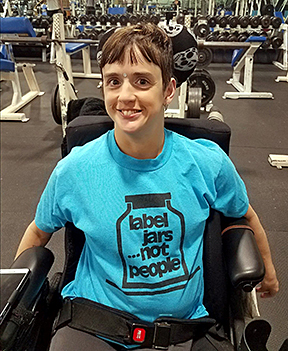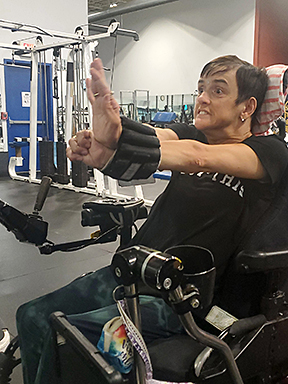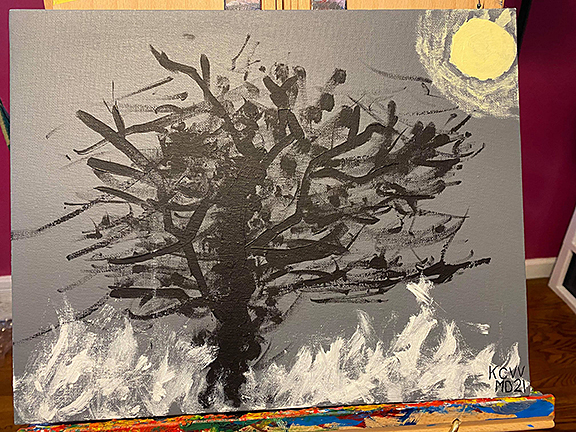Your Motivation NOT Your Inspiration
Cerebral palsy (CP) is a group of disorders that affect a person’s ability to move and maintain balance and posture. Cerebral means having to do with the brain. Palsy means weakness or problems with using the muscles. To date, it is the most common motor disability in childhood.
 As a disabled person staring comes as part of the package. After a while you can even begin to categorize them; the shy starers who just keep peeping out the corner of their eye, the pointers who think they are being discreet when they turn their friend’s attention your way, the all-out lookers who have absolutely no qualms in gawking with their mouth open, and then the children who can’t quite figure out if you’re a super hero or a robot.
As a disabled person staring comes as part of the package. After a while you can even begin to categorize them; the shy starers who just keep peeping out the corner of their eye, the pointers who think they are being discreet when they turn their friend’s attention your way, the all-out lookers who have absolutely no qualms in gawking with their mouth open, and then the children who can’t quite figure out if you’re a super hero or a robot.
Being physically disabled and in a wheelchair definitely comes with its share of setbacks, but when it is served with a side of insensitive people it can be beyond frustrating. In a world where you can be anything, we would like to believe that we could have some compassion. However, in this imperfect world it’s just not the case.
Ultimately, most disabled people are an anomaly, not a bad anomaly or a good anomaly just, an anomaly. It’s our nature as humans to spot what’s different. Just because it’s different. So why do we look? In most cases it’s out of curiosity or kindness. We look because we hope they are okay, because we are wondering what happened, and because we want to know how people manage. We look out of awe, maybe because we are astonished at how well that person is coping or because we think medical science and technology is amazing (wheelchairs, false limbs etc.).
No amount of staring could ever stop Kara from being who she is. After all, she’s just like you and I. She has a job like you and I, she has relationships like you and I, and she has hobbies like you and I. A normal human being is what she is. Kara also belongs to a gym. In fact, she’s been a member at Champions Fitness Center for over ten years now. Two times a week for an hour she works with her trainer, Jennifer. The only break she gets in that hour? To grab a quick drink of water.

When Kara first started her fitness journey, she was frail. She didn’t have much muscle tone, she tired easily, and she could barely lift five pounds. Now, what she used to think was difficult is just her warm-up. These days, she can lift over ten pounds with each arm and she can easily lift more than twenty pounds with her legs.
Kara is used to other gym members approaching her and telling her “How good
she is doing” or “How strong she is.” She has been told time and time again what an inspiration she is. Of course, she appreciates it. Who doesn’t like a compliment? But to be honest with you she really doesn’t like it. Believe it or not, Kara actually dislikes the word “Inspiration’’ when people use it to describe her. You may think that’s strange, but it’s because she sees herself as just a forty-five-year-old woman with a physical disability. That’s it. She’s just trying, like everyone else, to do her best in life and accomplish the things she wants to do.
Yes, having a disability forces Kara to work harder to achieve her goals, but she really only thinks of her disability when things prevent her from doing something she wants to do. For instance, when she comes across a restaurant with no wheelchair access or experiences unreliable homecare staff (which has happened more times than she’d like to mention) it can be very disheartening. When she has to recognize government legislation that is not disability friendly that too can be really discouraging.
Here are 12 things to know about Cerebral Palsy:
 Cerebral palsy (CP) is a group of disorders that affect a person’s ability to move and maintain balance and posture.
Cerebral palsy (CP) is a group of disorders that affect a person’s ability to move and maintain balance and posture.- CP is the most common motor disability of childhood. About 1 in 345 children has been identified with CP according to estimates from CDC’s Autism and Developmental Disabilities Monitoring (ADDM) Network.
- CP is more common among boys than girls, and more common among black children than among white children.
- Most (about 75%-85%) children with CP have spastic CP. This means that their muscles are stiff, and as a result, their movements can be awkward.
- Over half (about 50%-60%) of children with CP can walk independently.
- About 1 in 10 children identified with CP walk using a hand-held mobility device.
- Many children with CP have one or more additional conditions or diseases along with their CP, known as co-occurring conditions. For example, about 4 in 10 children with CP also have epilepsy and about 1 in 10 have autism spectrum disorder.
- Most CP is related to brain damage that happened before or during birth and it is called congenital CP.
- A small percentage of CP is caused by brain damage that happens more than 28 days after birth. This is called acquired CP. Factors such as having a brain infection (such as meningitis) or suffering a serious head injury can increase the risk for acquired CP.
- The specific cause of CP in most children is unknown.
- CP is typically diagnosed during the first or second year after birth. If a child’s symptoms are mild, it is sometimes difficult to make a diagnosis until the child is a few years older.
- With the appropriate services and support, children and adults with CP can stay well, active, and a part of the community.
In Conclusion:
Kara Vander Veer is just like you and I. She’s just a forty-five-year-old woman with a physical disability. She is strong mentally, maybe stronger than you and I, and physically fit to the best of her ability. Whether it’s working out at Champions Fitness Center to stay strong and fit, or painting a new piece of art work for her small business, Kara’s looking ahead to a bright future.
“Yes, there are individuals who I do consider an inspiration,” says Vander Veer. Helen Keller, Gandhi and Martin Luther King to name a few. I am just a strong, determined woman who goes after the ultimate goal; Happiness.
“Our greatest strength as a human race is our ability to acknowledge our differences, our greatest weakness is our failure to embrace them.” – Judith Henderson
You can check out some of Kara’s colorful abstract paintings on Facebook at Kara’s Creations. You will be quite impressed with her work!










